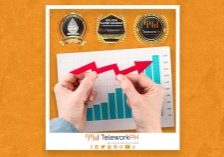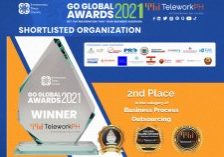Why Workforce Management Works
TeleworkPH
Published: June 25, 2020
In the past, workforce management was only practiced by call centers. However, today it’s progressively applied by global businesses in various industries. The concept of workforce management found its start to help call center managers identify the number of personnel needed to supply call demand. Before workplace management was developed, business owners were struggling to streamline their workforce efficiency. They often applied what’s considered to be a hit-and-miss method. However, thanks to workforce management, business owners can now follow a sound and structured system that will increase their operational performance.


Let us help you scale your business. Book a
FREE
value-bomb
strategy session with our
Outsourcing Specialist NOW!

What is Workforce Management?
There’s so much more to workforce management than just having to manage the working schedule of employees. By definition, workforce management is a set of processes used to optimize the performance levels of an organization. Using this approach allows you to maximize efficiency for both individual employees and the company as a whole. It also integrates all the working factors needed to run a successful business. But what’s the end goal of workforce management? The goal is to create an enhanced level of customer experience that can directly contribute to the company’s predefined goals.
How Does Workforce Management Work?
Workforce management is a broader cycle that surpasses basic human resources and training activities. These are the key aspects of the Workforce Management (WFM) cycle:

1. Data Analysis
The first step is to take a look at the available data. Before deciding on any workforce schedule or budget, review each of your employee’s skill sets to match the tasks at hand. Also consider working conditions such as demographics, proficiency, and emotional quotient. And lastly, take a hard look at labor regulations in your area to avoid any compliance issues.
2. Forecast and Budget
With the data and conditions given, the next step is to identify how many staff resources are needed at any given period. Say, for example, you own a décor shop, and Christmas is fast approaching. Therefore, you need to allocate enough manpower to address your customer’s demand during peak seasons. You must also take into account the company’s working budget to afford the staff on hand.
3. Schedule
Manual scheduling is tedious and time-consuming. Luckily, workforce management systems automate this process to produce an optimal schedule. Workforce management takes into account all instances such as absences, vacations, and workforce availability. The system makes it easier to offset no-shows and emergency absences and it won’t leave your operations hanging.
4. Performance
Once you’ve set the schedule, leave it to the on-ground team to monitor workforce performance. Monitoring employee performance allows you to identify what drives employee productivity. Timekeeping and attendance also play a huge role in monitoring employee performance. You can check attendance day-to-day or even on an hourly basis. Reward employees who are consistently on time and who makes the most output. At the same time, you can take note of employees who often miss their shifts and create a workaround plan for them.
5. Evaluation
Check the monitoring report of the on-ground team to measure the result of employee performance. If everything is still not up to par, create a new strategy using workforce optimization. Workforce optimization simply refers to the integration of new processes and strategies to further improve operational performance. After the evaluation, repeat step number one to review the new processes and data to start another cycle.
What are the Benefits of Workforce Management?
There are many benefits to workforce management. In fact, these benefits revolve around putting the right people in the right role, at the right time.
Increased Employee Productivity
Workforce management plays a vital role in employee engagement. According to this study, only 15% of employees actually report how engaged they feel with work. Workforce management provides a platform for employee feedback. Workforce management helps boost employee morale through increased transparency and direct employee-supervisor communication. After all, an efficient workforce can drive sustainable customer satisfaction.
Efficient Labor Planning
The key aspects of workforce management can directly contribute to efficient labor planning. Factors to efficient labor planning include identifying employee skill sets, appointing the right schedule, increasing employee retention, and complying with labor regulations. Workforce management performs all these factors and more.
Save on Time and Cost
The automation of workforce management systems significantly reduces operational costs. The strict implementation of workforce management can eliminate errors in computation. It can also implement and adjust staff schedules more effectively. Not to mention, it can save you a lot of time from doing manual work. Instead of having to do manual scheduling or forecasting, Workforce management systems are in place so you can just easily input your variables and let the machine calculate the result.
Looking Ahead
It’s clear that workforce management turns an unpredictable workforce into your company’s greatest asset. This approach will only grow more as we have seen significant growth in its adoption by countless businesses worldwide. With the advent of cloud computing and the availability of workforce management software in the market, we can only expect that workforce management will evolve to help businesses succeed in the years to come.
Follow us for more great content and business insights:


































































































































































































